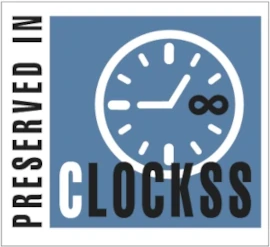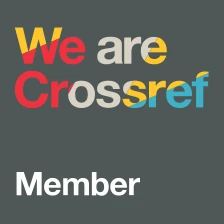Publication of issue 18, ‘Traffickers’
What do we (not) know about human traffickers?
Publication of issue 18 of Anti-Trafficking Review, ‘Traffickers’
Guest Editor: Marika McAdam
Editor: Borislav Gerasimov
Over the past two decades, much has been written about trafficked persons, the factors that led them to be trafficked, their exploitation, and their needs after leaving the trafficking situation. Much less has been written about traffickers. As a result, counter-trafficking stakeholders have an incomplete picture of who the perpetrators of trafficking are and lack a robust evidence-base from which to design interventions to prevent and address criminal conduct.
The new Special Issue of Anti-Trafficking Review is a step towards filling this knowledge gap. It provides much-needed insights into the characteristics, motivations, and modus operandi of traffickers, their relationships with victims, and their treatment in the criminal justice system.
In the opening article, Kyla Raby and Nerida Chazal examine four common stereotypes of traffickers and compare them to recently uncovered cases in Australia. They warn that stereotypes may prevent the identification of trafficking situations and call for more attention to the role of coercive control in the relationship between traffickers and victims. Le Thi Hong Luong and Caitlin Wyndham base their article on a review of court cases to show that most people convicted of trafficking in Vietnam are poor, low-educated members of ethnic minorities. The authors conclude that measures to prevent people from becoming victims of trafficking, such as access to education, social services, and decent jobs, may be successful in preventing offending too. Similarly, Milena Rizzotti argues in her article that the Nigerian madams convicted of trafficking in Italy that she interviewed were motivated by a desire for geographic and social mobility – not criminal intentions. She concludes that trafficking prevention should focus on socioeconomic development in Nigeria and more regular migration pathways in Europe.
Amber Horning and Loretta J. Stalans report that ‘pimps’ in the United States have low awareness and poor knowledge about human trafficking laws. They also describe various ‘oblivious sex traffickers’, such as boyfriends or drivers of sex workers, and call for awareness campaigns to inform the public of the definition of trafficking and the potential prison terms for those labelled and convicted as traffickers. Based on her interviews with 29 women identified as victims of trafficking in Malaysia, Haezreena Begum Abdul Hamid delves into the relationship between traffickers and victims. Interestingly, most of the women did not share negative feelings towards their traffickers but considered them as people who helped them travel to Malaysia and find work to support their families. Erica Koegler, Claire Wood, Lilly Bahlinger, and Sharon D. Johnson describe how traffickers use substances to recruit and exploit victims as reported by service providers in the American Midwest. The authors recommend more research into the role of substances, wider availability of substance abuse treatments, and drug prevention programmes in schools based on harm reduction principles. In the next article, Alexandra L. A. Baxter and Nerida Chazal examine how Australian courts construct the socioeconomic constraints and financial burdens that lead women to become traffickers. They suggest that the pressure to support dependants, and past experiences of violence and victimisation, should be considered as mitigating circumstances in sentencing.
The last two thematic articles focus on the rights of alleged traffickers. Jason Haynes tests whether the prosecution provisions of anti-trafficking laws in Commonwealth Caribbean states encroach upon the constitutional rights of accused persons. He argues that some provisions could be challenged and calls for their amendment to avoid the possibility of traffickers escaping justice. Writing from the perspective of a barrister practising in New Zealand, Thomas Harré argues that traffickers’ right to a fair trial must be upheld. The right to fair trial, he argues, is not only a core tenet of a democratic society and part of the international human rights regime, but also guarantees that convictions are safe.
These nine research and conceptual articles are followed by four short articles. Georgios Papanicolaou and Georgios Antonopoulos describe how labour migration in Greece became associated with human trafficking and organised crime, transforming the ordinary people who employ much-needed migrant labour into ‘traffickers next-door’. Matthew C. Clarke argues that financial benefit may not be the main factor driving traffickers’ actions and calls for more in-depth research into their motivations. Alyssa Currier Wheeler shares data about traffickers’ profiles in the United States, based on a review of federal trafficking prosecutions over the past twenty years. Writing from the perspective of an NGO providing services to trafficked persons in Hong Kong SAR, Helen Leung, Crystal Yeung, and Patricia Ho describe the complex interplay and blurred emotional lines between traffickers and their victims.
The Special Issue concludes with an interview with Armand King who describes himself as having been involved in ‘domestic urban sex trafficking’ in San Diego, USA, for over a decade. He speaks about the socioeconomic deprivation and systemic racism imposed on inner-city communities in the USA, which make ‘pimping and prostitution’ the best among a very limited set of options for making a living.
Taken together, the articles in the Special Issue reveal that many of the people convicted as traffickers are not members of organised criminal syndicates but, much like their victims, come from disadvantaged socio-economic backgrounds, ethnic and racial minorities, or other marginalised groups. From a prevention perspective, this means that addressing the root causes of trafficking, such as racial, ethnic, gender, or other discrimination; unequal access to regular migration pathways; and limited opportunities for education and decent jobs, can prevent people from falling victim to trafficking, and also prevent them from becoming traffickers. From a prosecution perspective, it suggests a need to consider offenders’ circumstances and role in the trafficking process to ensure that the punishment meted out fits the crime.
View the new issue at https://www.antitraffickingreview.org/index.php/atrjournal/issue/view/29
See a short video where Caitlin Wyndham speaks about her article with Le Thi Hong Luong ‘What We Know about Human Traffickers in Vietnam’ here.
See a short video where Kyla Raby and Nerida Chazal speak about their article ‘The Myth of the “Ideal Offender”: Challenging persistent human trafficking stereotypes through emerging Australian cases’ here.



